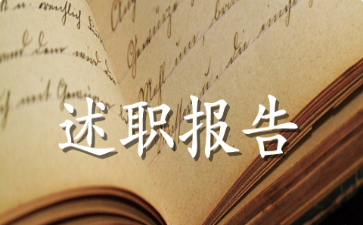小学英语重点知识归纳第1篇肯定句:是指用肯定的语气来陈述的句子,如:ImaSheisaHeworksinaTherearefourfansinourHewilleatlunchatIwatchedT下面是小编为大家整理的小学英语重点知识归纳集锦10篇,供大家参考。

小学英语重点知识归纳 第1篇
肯定句:是指用肯定的语气来陈述的句子,如:I"m a She is a He works in a
There are four fans in our He will eat lunch at I watched TV yesterday
2,否定句:含有否定词或表示否定意义词的句子,如:I"m not a She is not (isn"t) a
He does not (doesn"t) work in a There are not (aren"t) four fans in our
He will not (won"t) eat lunch at I did not (didn"t) watch TV yesterday
☆注意☆小结:否定句主要是在肯定句的基础上加上了否定词"not".有动词be的句子则"not"加在be后面,可缩写成"isn"t,aren"t",但am not 一般都分开写.没有动词be的句子则要先在主要动词的前面加上一个助动词(do,does,did),然后在它后面加上"not",你也可以把它们缩写在一起如"don"t , doesn"t , didn"t ).这三个助动词要根据人称和时态来选择,其中"does"只用于一般现在时主语是第三人称单数的情况,而"did"只用于一般过去时,不论主语是什么人称和数,都用"did" .
3,一般疑问句:是指询问事实的句子,此类句子必须用"yes",或"no"来回答.
如:Are you a student Yes, I am / No, I"m
Is she a doctor Yes, she / No, she isn"
Does he work in a hospital Yes, he / No, he doesn"
Are there four fans in our classroom Yes, there / No, there aren"
Are you going to buy a comic book tonight Yes, I / No, I am (Yes, we / No, we aren")
Will he eat lunch at 12:00 Yes, I / No, I will not(won"t).
Are they swimming Yes, they / No, they aren"
Did you watch TV yesterday evening Yes, I / No, I didn"
☆注意☆小结:一般疑问句是在肯定句的基础上,
①把动词be调到首位,其他照写,末尾标点符号变成问号即可.
②没有动词be的句子则要在句首加上一个助动词(do,does,did)再把紧跟在后面的动词变回原形,末尾标点符号变成问号即可.
这三个助动词也要根据人称和时态来选择,其中"does"只用于一般现在时主语是第三人称单数的情况,而"did"只用于一般过去时,不论主语是什么人称和数,都用"did" .一般疑问句有个重要的原则就是问和答要一致,即问句里的第一个单词(助动词)和简略答句里的这个词是一致的.
4,特殊疑问句:以特殊疑问词(what , where , who , which , when , whose , why , how等)开头引导的句子.此类句子应该问什么就答什么,不能用"yes ,no"来回答.如:
What is this It"s a
What does he do He"s a
Where are you going I"m going to
Who played football with you yesterday afternoon
Which season do you like best
When do you usually get up I usually get up at
Whose skirt is this It"s Amy"
Why do you like spring best Because I can plant
How are you I"m / I"m
How did you go to Xinjiang I went to Xinjiang by
☆其中how又可以和其他一些形容词连用组成特殊疑问词组用来提问,如: how many(多少(数量)), how much(多少(钱)), how tall(多高), how long(多长), how big(多大), how heavy(多重)
例句:How many pencils do you have I have three
How many girls can you see I can see four
How many desks are there in your classroom There are
☆小结:how many 用来提问可数名词的数量,主要有以上三种搭配,
How many + 名词复数+ do you have 你有多少……
How many + 名词复数+ can you see 你能看见多少……
How many + 名词复数+ are there… 有多少……
小学英语重点知识归纳 第2篇
动词的过去式的构成规则有:
A,规则动词
①一般直接在动词的后面加ed:如worked , learned , cleaned , visited
②以e结尾的动词直接加d:如lived , danced , used
③以辅音字母加y结尾的动词要改y为i再加ed(此类动词较少)如study – studied carry – carried worry – worried (注意play,stay不是辅音字母加y,所以不属于此类)
④双写最后一个字母(此类动词较少)如stopped
B,不规则动词(此类词并无规则,须熟记)小学阶段要记住以下动词的原形和过去式:sing – sang , eat – ate , see – saw , have – had , do – did , go - went , take - took , buy - bought , get - got , read - read ,fly - flew , am/is - was ,
are - were , say - said , leave - left , swim - swam , tell - told , draw - drew , come - came , lose - lost , find - found , drink - drank , hurt - hurt , feel - felt
小学英语重点知识归纳 第3篇
I"m=I am he"s=he is she"s=she is they"re=they are you"re=you are there"s=there is they"re=they are can"t=can not don"t=do not doesn"t=does not isn"t=is not aren"t=are not let"s=let us won"t=will not I"ll=I will wasn"t=was not
总结:通常情况下,"m即am,"s即is(但let"s=let us), "re即are ,n"t即not (但can"t=can not)
小学英语重点知识归纳 第4篇
一.动词be(is,am,are)的用法
我(I)用am, 你(you)用are,is跟着他(he),她(she),它(it)。单数名词用is,复数名词全用are。变否定,更容易,be后not加上去。变疑问,往前提,句末问号莫丢弃。还有一条须注意,句首大写莫忘记。
二.this,that和it用法
(1)this和that是指示代词,it是人称代词。
(2)距离说话人近的人或物用this, 距离说话人远的人或物用that。如:
This is a 这是一朵花。(近处)
That is a 那是一棵树。(远处)
(3)放在一起的两样东西,先说this, 后说that。如:
This is a That is a 这是一支钢笔。那是一支铅笔。
(4)向别人介绍某人时说This is…, 不说That is…。如:
This is Helen, this is 这是海伦,海伦,这是汤姆。
(5)This is 不能缩写, 而That is可以缩写。如:
This is a That’s a 这是一辆自行车。那是一辆轿车。
(6)打电话时,介绍自己用this, 询问对方用that。如:
—Hello! Is that Miss Green? 喂,是格林小姐吗?
—Yes, this Who’s that? 是的,我是,你是谁?
注意:虽然汉语中使用“我”和“你”,但英语中打电话时绝不可以说:I am…, Are you…?/Who are you?
(7)在回答this或that作主语的疑问句时, 要用it代替this或that。如:
①—Is this a notebook? 这是笔记本吗?
—Yes, it 是的,它是。
②—What’s that? 那是什么?
—It’s a 是只风筝。
小学英语重点知识归纳 第5篇
What用途广,要问“什么”它当先。(What’s this?)
How开头来“问安”。(How are you?)
Who问“谁”。(Who’s that man?)
“谁的”Whose来承担。(Whose eraser is this?)
询问“某地”用Where。(Where is her cat?)
“哪一个”Which句首站。(Which one?)
小学英语重点知识归纳 第6篇
当我们需要对事物作出比较时,需要用到比较级.比较级的句子结构通常是:
什么+ 动词be (am , is , are ) + 形容词比较级+ than(比)+ 什么,如:
I"m taller and heavier than (我比你更高和更重.)
An elephant is bigger than a (一只大象比一只老虎更大.)
形容词的比较级是在形容词的基础上变化而来的,它的变化规则是:
①一般的直接在词尾加er ,如tall - taller , strong - stronger ,
②以e结尾的,直接加r ,如fine – finer ,
③以辅音字母加y结尾的,先改y为i再加er,如funny - funnier
④双写最后的字母再加er,如big – bigger, thin – thinner ,hot – hotter
☆注意☆比较的两者应该是互相对应的可比较的东西.
典型错误:My hair is longer than (我的头发比你更长.)
比较的两者是我的头发,你(整个人),那么比较的对象就没有可比性.
应该改为:My hair is longer than 或My hair is longer than your
比较级专项练习: 一,从方框中选出合适的单词完成句子heavy tall long big
(1) How is the Yellow River
(2) How is Mr Green He"s
(3) How are your feet I wear size
(4)How is the fish It"s
小学英语重点知识归纳 第7篇
一、人称代词
人称
单数
复数
主格
宾格
主格
宾格
第一人称
I
me
we
us
第二人称
you
you
you
you
第三人称
he
him
they
them
she
her
it
it
小学英语重点知识归纳 第8篇
动词的过去式的构成规则有:
A,规则动词
①一般直接在动词的后面加ed:如worked , learned , cleaned , visited
②以e结尾的动词直接加d:如lived , danced , used
③以辅音字母加y结尾的动词要改y为i再加ed(此类动词较少)如study – studied carry – carried worry – worried (注意play,stay不是辅音字母加y,所以不属于此类)
④双写最后一个字母(此类动词较少)如stopped
B,不规则动词(此类词并无规则,须熟记)小学阶段要记住以下动词的原形和过去式:sing – sang , eat – ate , see – saw , have – had , do – did , go - went , take - took , buy - bought , get - got , read - read ,fly - flew , am/is - was ,
are - were , say - said , leave - left , swim - swam , tell - told , draw - drew , come - came , lose - lost , find - found , drink - drank , hurt - hurt , feel - felt
四:动词现在分词详解 动词的ing形式的构成规则:
①一般的直接在后面加上ing , 如doing , going , working , singing , eating
②以e 结尾的动词,要先去e再加ing ,如having , writing
③双写最后一个字母的(此类动词极少)有:running , swimming , sitting , getting
小学英语重点知识归纳 第9篇
a, an的选择: 元音字母开头的单词用an,辅音字母开头的单词用
am , is , are的选择: 单数用is , 复数用 I 用am , you 用
have , has 的选择: 表示某人有某物.单数用has , 复数用 I ,you 用have .
there is, there are 的选择:表示某地有某物,某人.单数用there is , 复数用there
some, any 的选择:肯定句用some, 疑问句和否定句用
疑问词的选择:what (什么) who (谁) where (哪里) whose (谁的) why(为什么)when(什么时候)which(哪一个)how old (多大) how many (多少)how much(多少钱)
小学英语重点知识归纳 第10篇
一、形容词性物主代词
1、形容词性物主代词8个:
My your his her its our your their
我的你的他的她的它的我们的你们的他(她、它)们的
2、形容词性物主代词的特点:
1)译成汉语都有"的" eg:my 我的 their 他们的
2)后面加名词:eg:my backpack his name
3)前后不用冠词 a an the
This is a my eraser(错误)
That is your a pen(错误)
It"s his the pen(错误)
3、I(物主代词)my you(物主代词)your he (物主代词)her we (物主代词) our
注:在变物主代词时,把原题所给的词加上的,再译成单词就可以了。
推荐访问:归纳 集锦 小学英语 小学英语重点知识归纳集锦10篇 小学英语重点知识归纳(集锦10篇) 小学英语重点知识点总结大全

